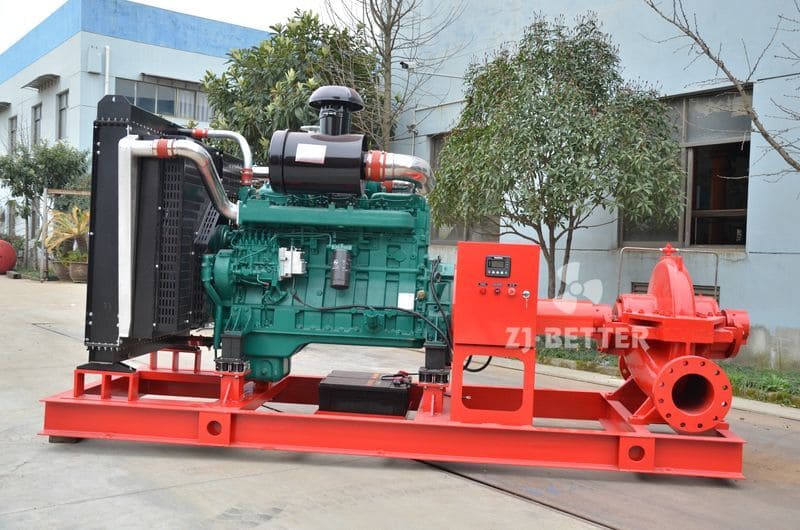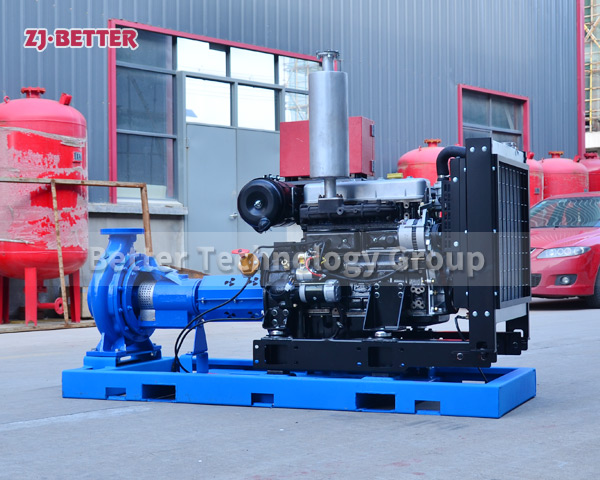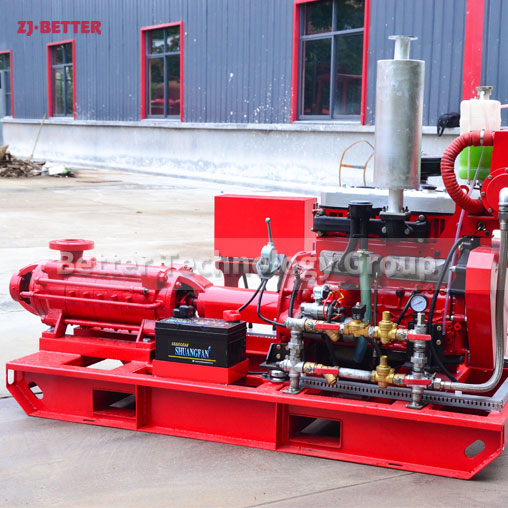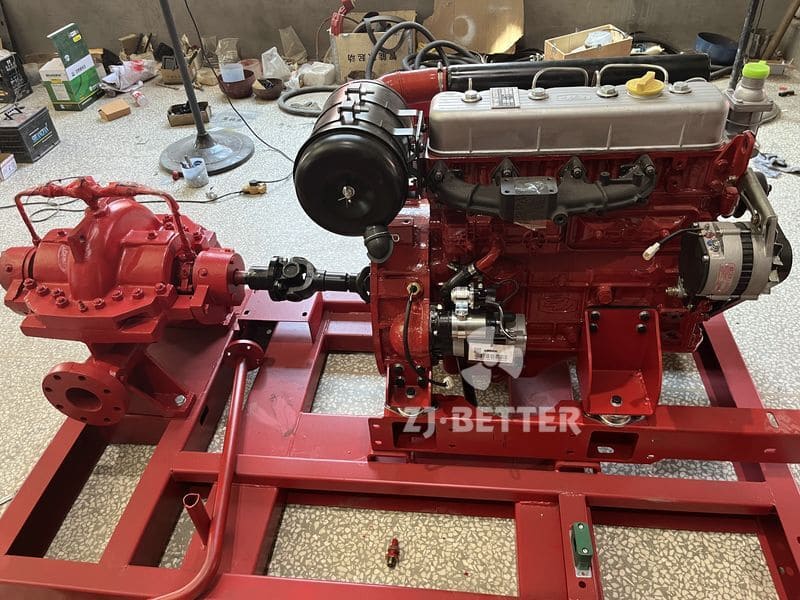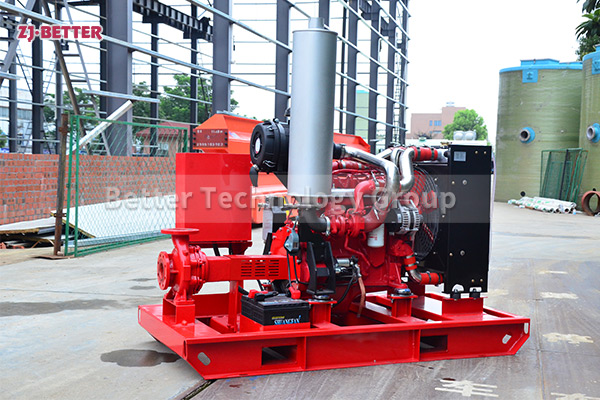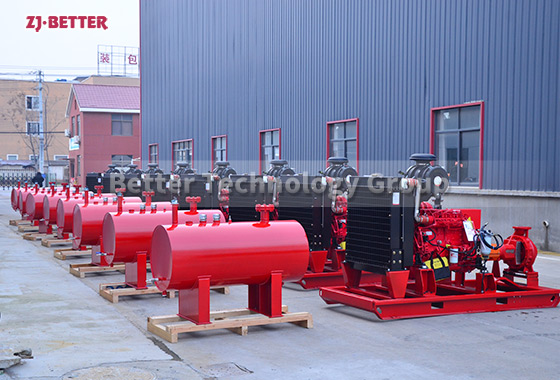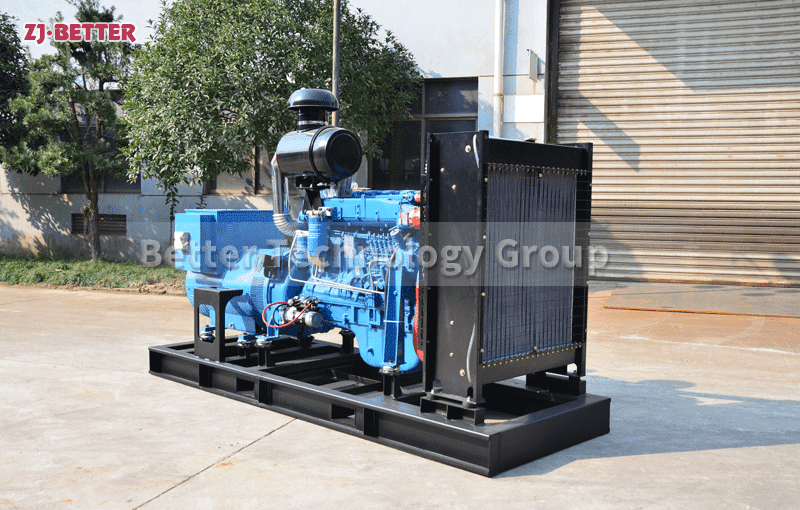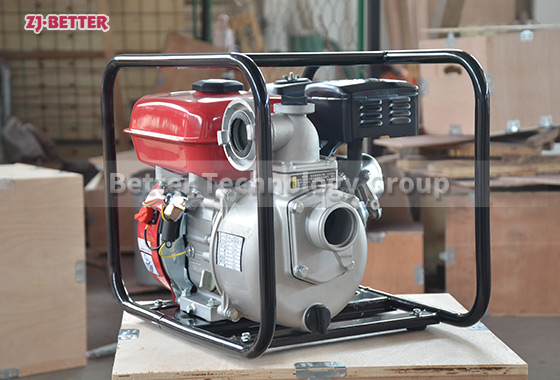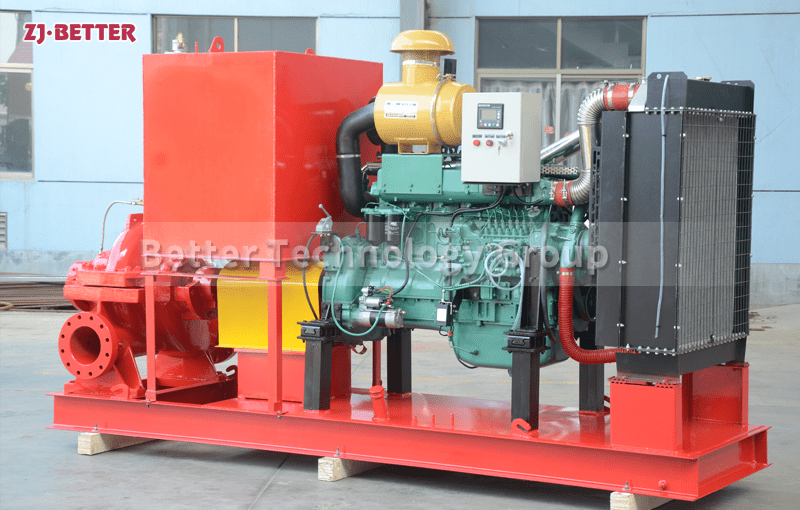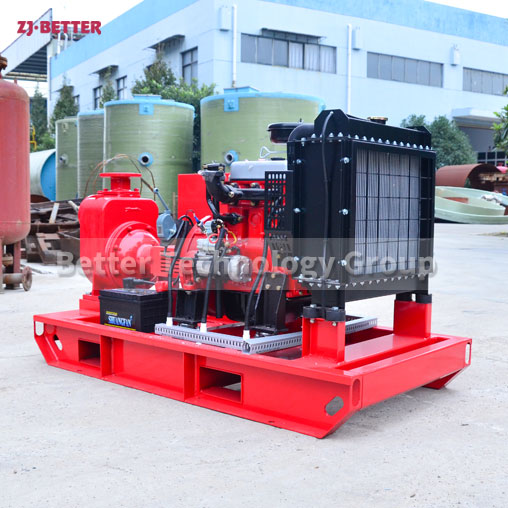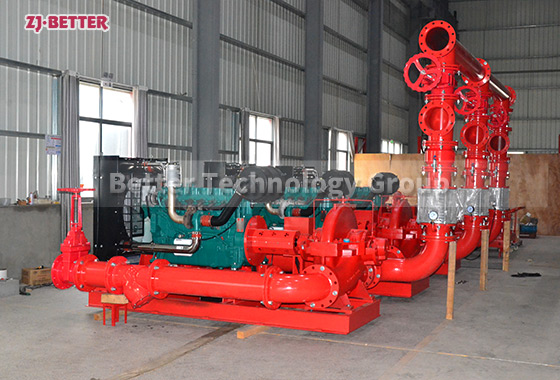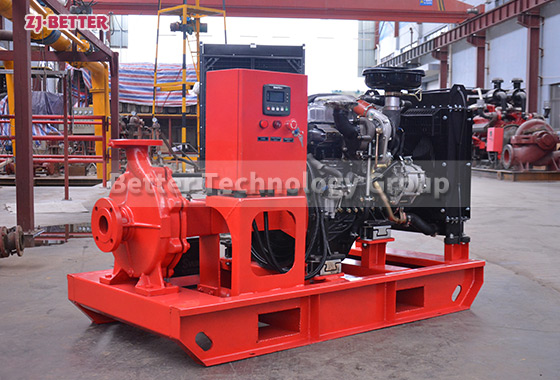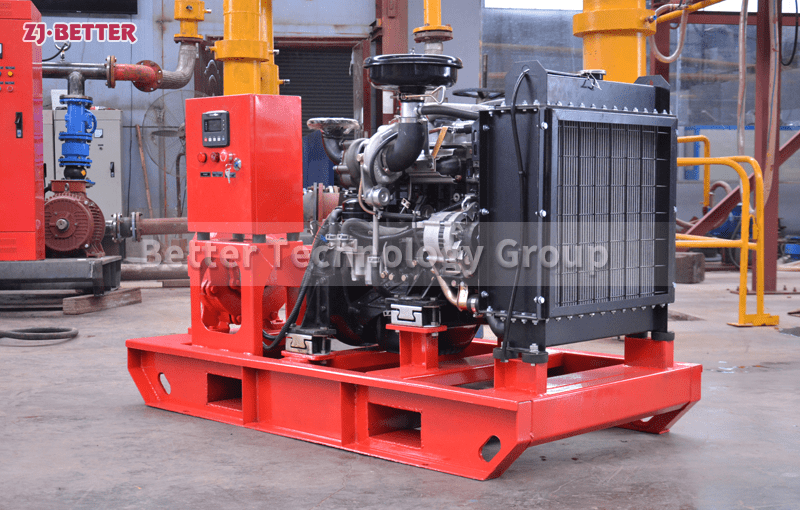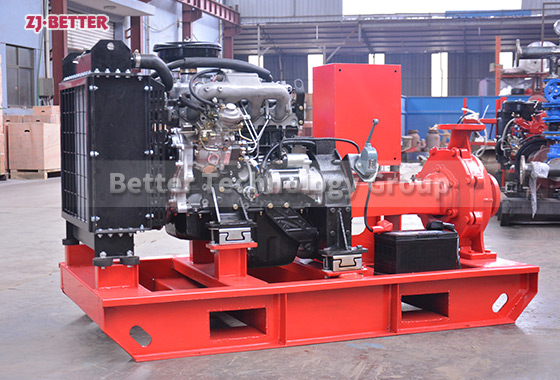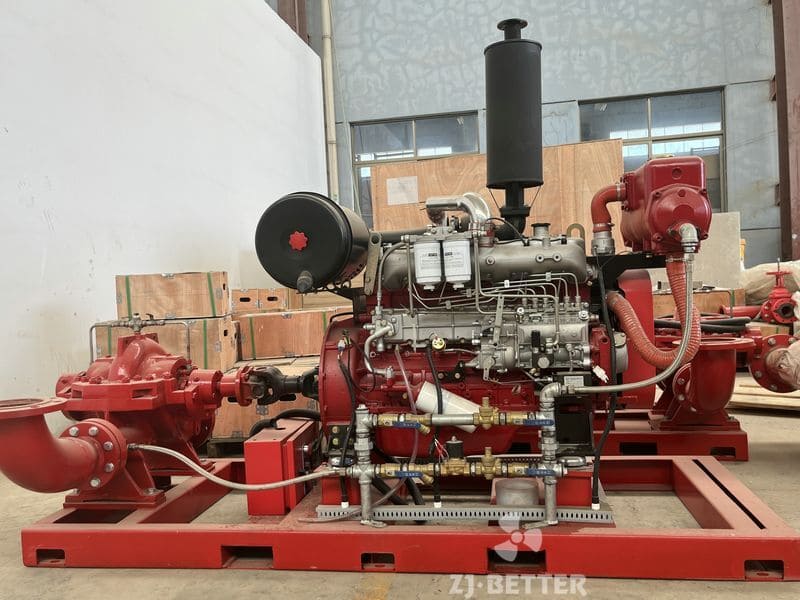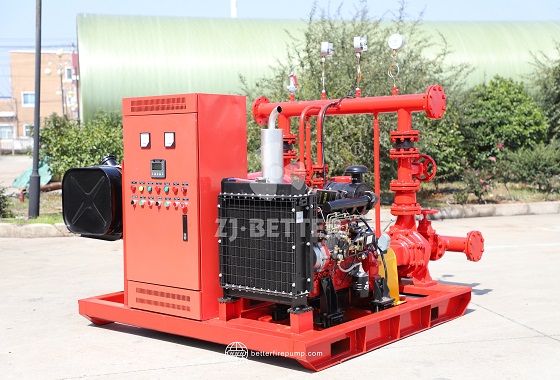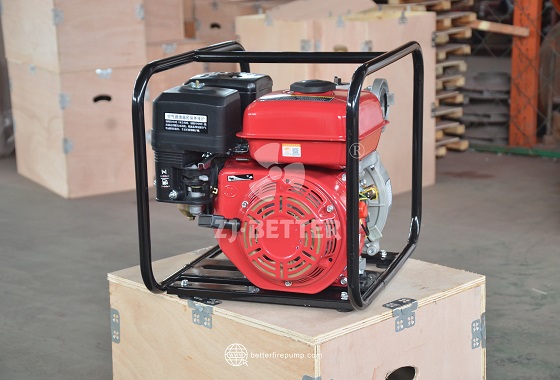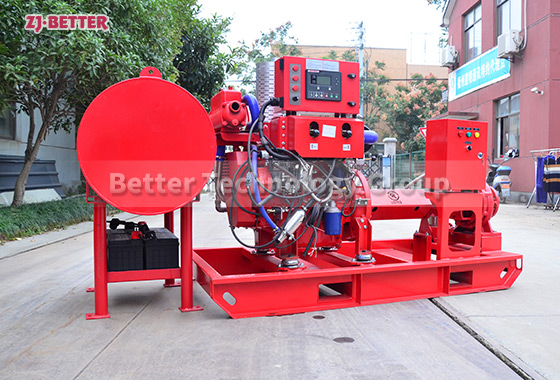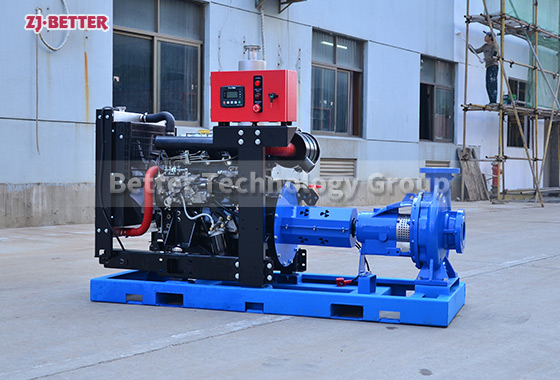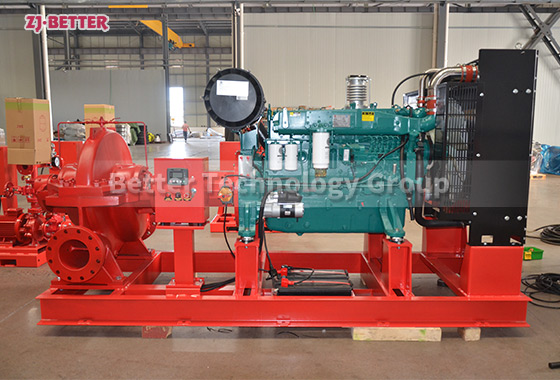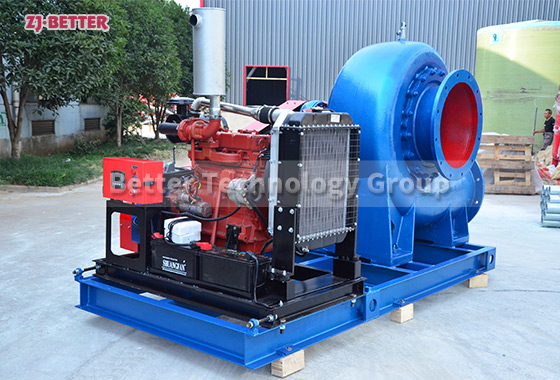XBC-OTS Diesel Fire Pump
As a fixed fire extinguishing equipment, diesel engine fire pump has been widely used in fire diversion, especially in emergency situations such as no power supply or abnormal power supply, the existence of diesel engine fire pump is particularly important.
Diesel engine fire pump products have the characteristics of leading technology, high degree of automation, excellent performance protection function, reasonable structure, simple installation and high cost performance. At the same time, in order to meet the different needs of users and reasonable investment, it can be used together with electric fire pump.
XBC diesel fire pump consists of diesel engine, chassis, cooling refrigerator and fan, high elastic coupling, water pump, diesel tank and control panel and other equipment. The water pump is directly connected with the diesel engine through a highly elastic coupling or a diaphragm coupling, and is jointly installed on the common channel steel chassis.
Cooling of the engine The cooling water tank is cooled by the engine-driven fan. The entire cooling system forms a closed loop, and the water tank is also installed on the chassis. The control panel and the unit are separated, and the two are connected by control cables, signal cables and power cables. The fuel tank of the unit with diesel engine power below 200kw is directly installed on the unit, and the unit greater than 200kW adopts the split fuel tank. The basic unit is suitable for fire protection systems with an inverted water source.

